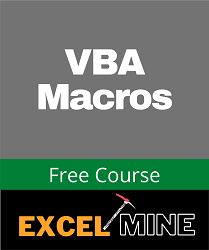Investment- Theory
The primary objective of this course is to provide a broad overview of the field of investments and an introduction to the process of investing, both in theory and in practice. Investing is usually divided into two parts: portfolio management and security analysis. Portfolio management combines securities into a portfolio tailored to the investor’s preferences and needs, monitoring the portfolio, and evaluating its performance. Modern portfolio theory (MPT) is the core of portfolio management. Security analysis attempts to determine whether individual security (or total market or market segment) is correctly valued. In other words, it is the search for mispriced assets.
| What you’ll learn |
After taking this course, you will learn
✓ how markets work
✓ the relation between risk and return
✓ how to evaluate the performance of a portfolio
✓ how to create an optimal portfolio
✓ the basics of fixed-income securities
| Course content |
Chapter 01: Investment Background and Issues
| 1 | What is an investment? | Investments defined |
| 2 | Difference between Real and Financial assets | Real vs. Financial assets |
| 3 | What is an investment process? | Investment Process |
| 4 | Average return in the US stock market | Average Stock Return |
Chapter 02: Asset Classes and Financial Instruments
| 5 | What are the asset classes? | Asset Classes |
| 6 | How to calculate Equivalent Taxable Yield | Equivalent Taxable Yield |
| 7 | How to calculate Treasury bond price and yield | Treasury Bond Price and Yield |
| 8 | How to calculate Price Weighted Index | Price Weighted Index |
| 9 | How to calculate the Value-Weighted Index | Value-Weighted Index |
| 10 | Profit and Returns on Stock Options | Profit and Returns on Options |
Chapter 03: Securities Market
| 11 | What is Short selling? | Short Selling |
| 12 | Margin Trading basics | Margin Trading |
| 13 | Margin trading in a bullish market | Margin Trading in Bull Market |
| 14 | How to short sell in a margin account | Short Selling in Margin Account |
Chapter 04: Risk Return and Historical Record
| 15 | Risk and Return: All you need to know | Risk and Return Basics |
| 16 | How to calculate expected return and standard deviation | Calculate Risk and Return |
| 17 | How to calculate Time Weighted and Dollar Weighted return | Time and Dollar Weighted Return |
| 18 | How to measure the risk of Apple Inc. in Excel | Calculate Apple Stock Risk |
Chapter 05: Equity Valuation
| 19 | What is Free Cash Flow? | Free Cash Flow |
| 20 | How to calculate the market value of equity using DCF and FCFE | Market Value Equity |
| 21 | How to estimate the price of a stock using CAPM | Stock Price and CAPM |
Chapter 06: Bond Price and Yields
| 22 | How to calculate bond price | Bond Price |
| 23 | How to calculate the price of a semi-annual bond | Semi-annual Bond Price |
| 24 | How to calculate the YTM of a bond | Bond YTM |
| 25 | How to calculate the invoice price of a bond | Bond Invoice Price |
| 26 | How to calculate the price and yield of a zero-coupon bond | Zero-coupon Bond Price |
| 27 | How to calculate the holding period return of a bond | Holding Period Return |
| 28 | How to calculate the effective annual interest rate (EAR) | Effective Annual Interest |
| 29 | How to calculate the bond equivalent yield and effective annual yield | Bond Equivalent Yield |
Chapter 07: Managing Bond Portfolio
| 30 | How to calculate the Macaulay Duration of a bond | Bond Macaulay Duration |
| 31 | Macaulay Duration using the weighted average method | Duration-Weighted Method |
| 32 | How to calculate the change in bond price with the change in yield | Bond Price Change |
| 33 | Bond portfolio immunization strategy | Bond Portfolio Immunization |
| 34 | How to calculate the bond duration with the convexity rule | Bond Convexity |
Chapter 08: Effective Diversification
| 35 | How to calculate optimal portfolio using Excel- two stocks | Optimal Portfolio Two Stocks |
| 36 | How to calculate optimal portfolio using Excel- five stocks | Optimal Portfolio Five Stocks |
Chapter 09: Efficient Market Hypothesis
| 37 | Efficient Market Hypothesis (EMH)- basics | EMH Basics |
Chapter 10: Options Markets
| 38 | Options markets for beginners | Options Market Basics |





These courses are coming up soon!

